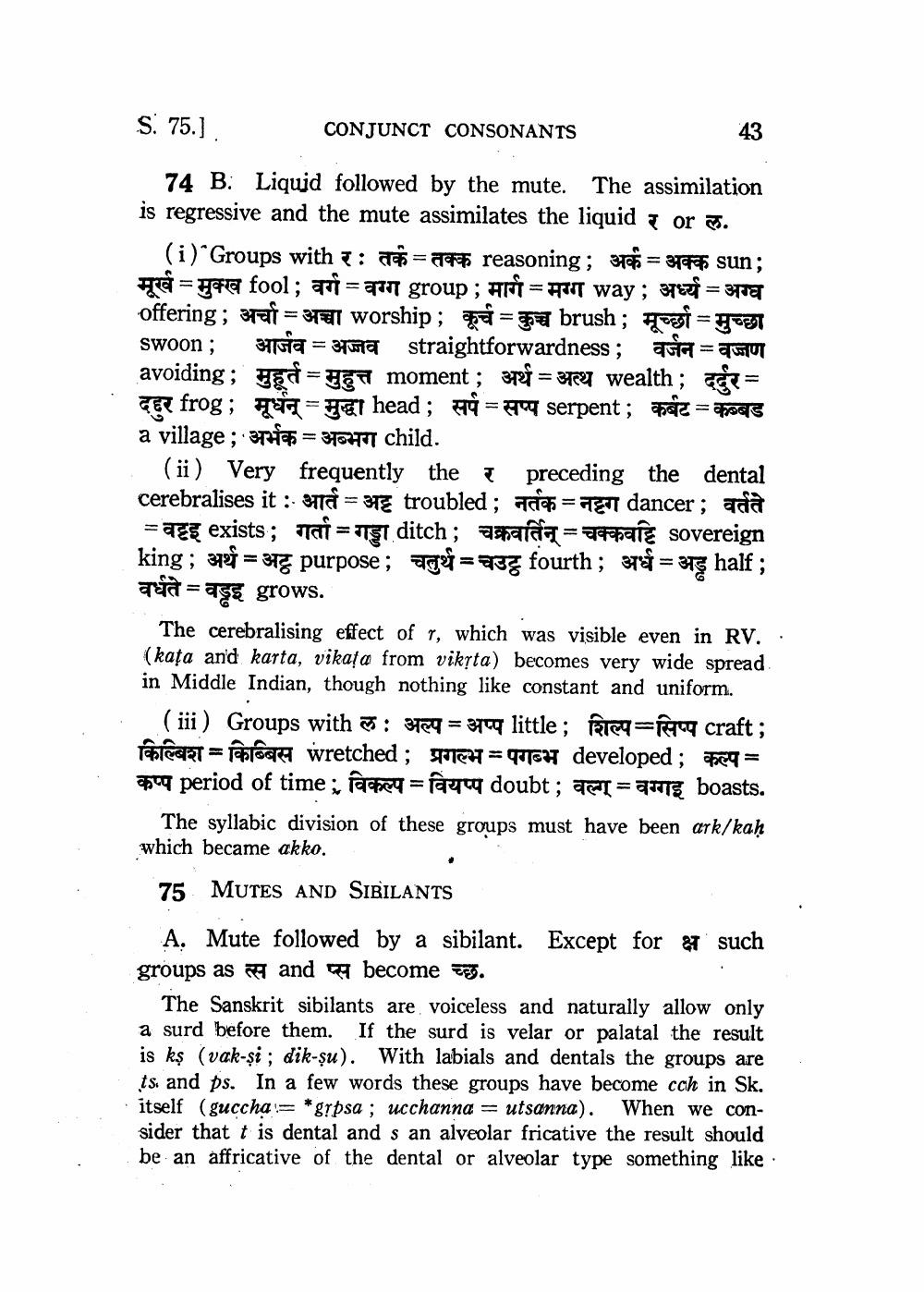________________
S. 75.]
CONJUNCT CONSONANTS
___74 B: Liquid followed by the mute. The assimilation is regressive and the mute assimilates the liquid र or ल.
(i) Groups with र : तर्क = तक्क reasoning ; अर्क = अक्क sun; मूर्ख = मुक्ख fool; वर्ग= वग्ग group; मार्ग= मग्ग way; अर्ध्य = अग्ध offering; अर्चा = अच्चा worship; कूर्च = कुच्च brush; मूर्छा=मुच्छा swoon; आर्जव = अजव straightforwardness; वर्जन =वजण avoiding; मुहूर्त = मुहुत्त moment; अर्थ = अत्थ wealth; दर्दुर = दद्दुर frog; मूर्धन् = मुद्धा head; सर्प सप्प serpent; कर्बट = कब्बड a village ; अर्भक = अब्भग child.
(ii) Very frequently the र preceding the dental cerebralises it : आर्त = अट्ट troubled; नर्तक = नट्टग dancer; वर्तते
= वट्टइ exists; गर्ता = गड्डा ditch; चक्रवर्तिन् = चक्कवट्टि sovereign king ; अर्थ = अट्ठ purpose; चतुर्थ = चउट्ठ fourth; अर्ध = अड्ड half ; वर्धते = वडइ grows.
The cerebralising effect of r, which was visible even in RV.. (kata and karta, vikata from vikrta) becomes very wide spread in Middle Indian, though nothing like constant and uniform.
(iii) Groups with ल : अल्प = अप्प little; शिल्प-सिप्प craft; किल्बिश- किब्बिस wretched ; प्रगल्भ % पगब्भ developed ; कल्प = कप्प period of time : विकल्प = वियप्प doubt ; वल्ग् = वग्गइ boasts.
The syllabic division of these groups must have been ark/kaḥ which became akko. 75 MUTES AND SIBILANTS
A. Mute followed by a sibilant. Except for such groups as त्स and प्स become च्छ.
The Sanskrit sibilants are voiceless and naturally allow only a surd before them. If the surd is velar or palatal the result is ks (vak-si; &ik-su). With labials and dentals the groups are ts. and ps. In a few words these groups have become cch in Sk. itself (guccha = *grpsa ; ucсhanna = utsanna). When we consider that t is dental and s an alveolar fricative the result should be an affricative of the dental or alveolar type something like




